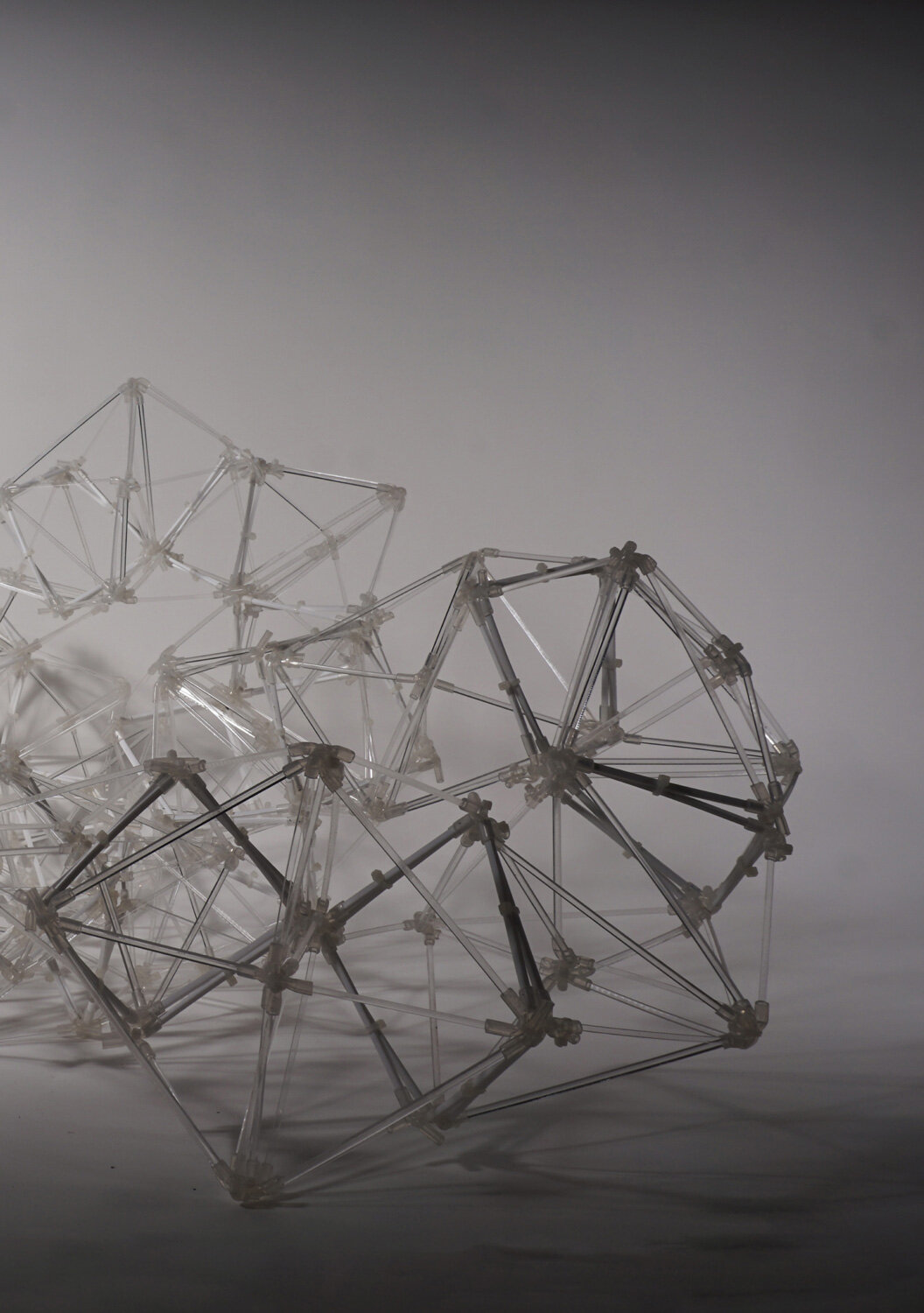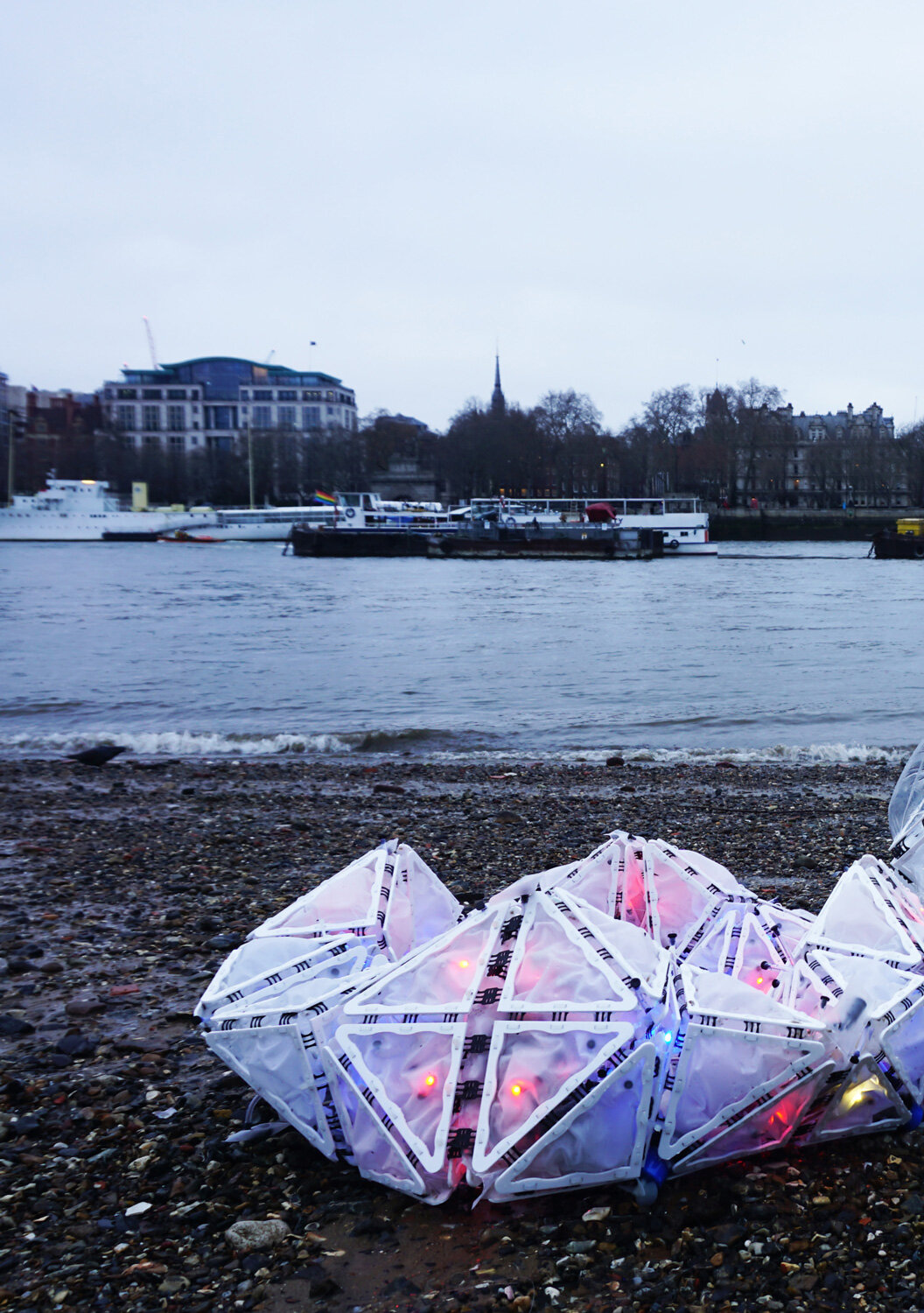Constructing agency 2018-2020
amphibisco
Studio Theodore Spyropoulos
Tutor Mostafa El-Sayed, Apostolos Despotidis
Team avander Shijie Cai (China), Mia Yanming Chen (China), Aleksander Skworz (Poland), Vin Yiying Wu (China)
Amphibisco aims to not only inhabit the waterways of London by creating adaptive connections between the opposite river banks, but also actively solving the land-water boundary problem within an urban setting. Currently, the existing water architectures take the form of bridges and piers, however these are passive with respect to any aquatic issues as they tend to ignore the special characteristics of water as a medium.
The project uses high tide to build land in the waterways and low tide aims to create water spaces on land. To achieve this a tiled system of floating load-bearing units have been developed that respond to human activity and external agents thus creating temporary aggregations. Collectively the system adapts to the tidal changes and other factors that emerge from the environment and the gathering of the units on the water create ‘land-like' event venues in the form of parks. Water is utilised as a means to not only deliver humans to architecture, but also architecture to humans thus utilising water as a medium for transportation.
The fluid nature of the material provides the possibility of moving and reconnecting any aqua-borne aggregation along the waterway resulting in the concept of ‘park-delivery’. This allows for the ability to navigate the water service to reach a park structure, as well as to order one of the aggregates for delivery at any point along the banks. Each aggregation is temporary and can constantly be modified by real live interventions of agents and humans, and together they respond to the environment as a collective. This allows an aggregate to be a floating park at high tide and a harbour pool during low tide.















